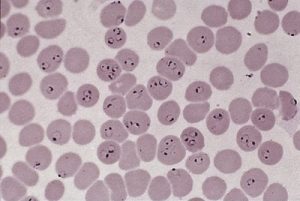If you have ever been in a statistics class, you might have heard of the “Normal Distribution”. This distribution tells us that most things fall within the middle and the extremes exist in small quantities. You can think of IQ following this pattern. The average person has an IQ of 100, less people have an IQ of 130 and even fewer people have Albert Einstein’s IQ of 160 – don’t we all wish we did. There are many variations of this and the distribution looks like a mountain, looking something like this:

photo credit: Wikipedia
This distribution describes many types of observations such a student’s grades, people’s heights, people’s blood pressure, shoe size and much more. It is a natural occurrence we observe in society and more importantly in the characteristics of people, such as people’s heights. This is important for society because it helps to understand what people need. Imagine if the average height of Canadians were 2.3m tall, we would definitely have much higher doors!
DOES the Normal Distribution RELATE TO OUR LIVES?
Seemingly, the word “normal” in normal distribution supposes that all occurrences in nature and society would display this pattern. However, this might not be the case. In fact, many cases in physics, biology, earth and planetary sciences, economics, computer science, demography and social sciences follow a different distribution – the Pareto distribution. The Pareto distribution is quite the opposite of the normal distribution and tells us that most of the data exist in the extremes. It is therefore more commonly known as the “80-20” law which means 80% of what is measured exists in 20% of the population. Examples of the Pareto distribution is the sizes of cities, earthquakes, and forest fires.
To look at this more closely, let’s look at the sizes of cities and towns in the United States of America. There are around 20,000 cities in the country. If the population of these cities followed the normal distribution then we would expect most of the cities to have an equal population size and only a few extreme cities to have a high amount of people and a low amount of people. However, we see that most people live in big cities such as Las Vegas and New York and the overwhelming majority of people live in a small number of cities. The following graph shows the percentages of cities in USA and the population of those cities.

photo credit: Newman, MEJ
The graph to the right displays a simpler display of the population of the US cities by doing some math. We can think of it as there being ten small suburbs surrounding a big city and ten of those cities surrounding a metropolitan city. We can also see it in Canada where metropolitan cities such as Vancouver, Montreal and Toronto are few in number but hold the majority of the population, while there are many more smaller cities spread across Canada with a small population.
Some other things that are interesting that follow this distribution is the numbers of citations to scientific papers, the numbers of copies of bestselling books sold, the diameter of craters on the moon, the length of relationships between couples, the frequency of family names, and people’s incomes.
Why should we care?
The Pareto distribution is particularly interesting because it shows that the natural state of things in a society can differ immensely. Even with books, although there are many authors that write books, only a handful make it on to the top-seller list. And in relationships, couples who are great with relationships last for decades, while couples who are poor with relationships can never break past one year. There is another topic that is widely debated about in society that follows the Pareto distribution which is wealth distribution. When we hear politicians blame the rich for poverty and income inequality – a big problem in society – one should wonder what a scientist’s perspective to the problem would be. We know in a more capitalistic society like America, 85% of the income is owned by the top 15% of the population.

Interestingly enough, this is the reality of how wealth distributes itself in a free society. You might have heard the term “the rich get richer while the poor get poorer.” Through out history, societies have tried to rectify this phenomena and failed. But politics aside, a reality that we must face is the purple elephant in the room named Pareto.







